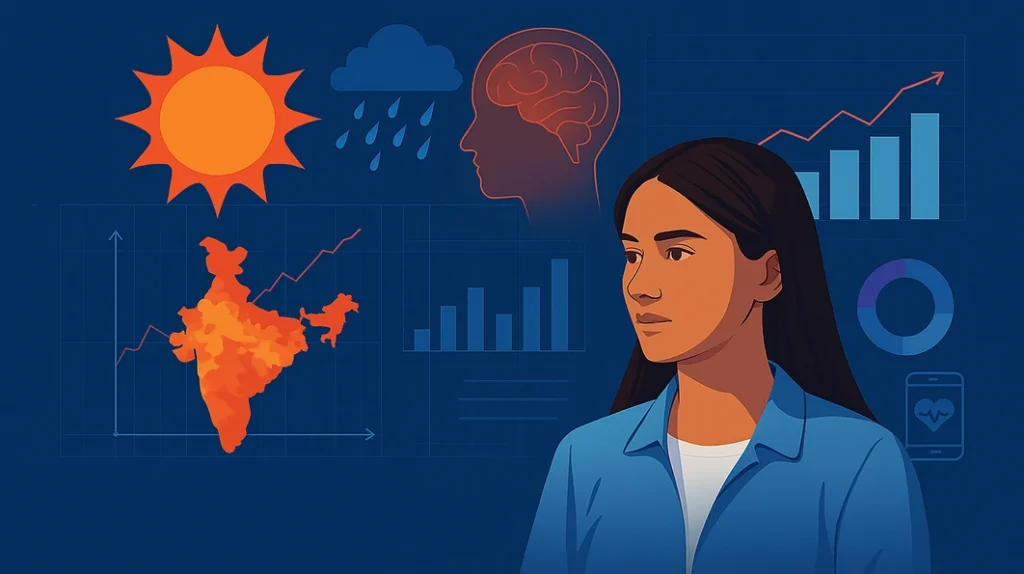New Delhi / Global : Telemedicine is redefining mental health in 2025. Here are the latest trends, tools, and best practices that make remote consultations effective, secure, and patient-focused.

The New Face of Mental Health Care
A WHO report states that one in every eight people worldwide lives with a mental health condition. In India, access to psychiatrists and counselors remains limited, especially outside cities. In 2025, telemedicine is bridging this gap. With just a smartphone and internet connection, patients now connect with mental health professionals across the country. This isn’t just about convenience – it’s about saving lives. For students and healthcare professionals, telemedicine represents the future of accessible, affordable, and stigma-free mental health care.
Why Tele-Mental Health Is Booming in 2025
The pandemic accelerated adoption of telemedicine, but the trend didn’t fade. Instead, it evolved. In 2025:
- Digital platforms dominate: Apps like Wysa (India), Talkspace, and BetterHelp are seeing record growth.
- Gen Z & Millennials are driving demand: Younger generations are more open to online therapy, valuing privacy and accessibility.
- Government support is rising: India’s National Tele-Mental Health Programme, launched in 2022, has scaled to reach 500+ districts.
- Stigma is shrinking: Telemedicine allows people to seek help privately, reducing hesitation and cultural barriers.
Best Practices for Remote Mental Health Consultations
1. Privacy First: Protecting Patients
Mental health consultations require more sensitivity than most medical visits. Platforms must follow strict privacy rules, such as HIPAA compliance in the US and India’s Telemedicine Practice Guidelines (updated 2025). Patients should also be advised to take calls in private, distraction-free spaces.
2. Building Trust Through the Screen
Trust is harder to build without physical presence. Therapists are now using active listening, warm tone, steady eye contact via camera, and gentle body language to reassure patients. Many platforms also integrate pre-session videos or welcome notes to reduce anxiety before the first call.
3. Technology That Supports Care
Unstable internet connections can disrupt therapy. The best platforms now offer low-bandwidth audio options, instant reconnection features, and AI-based noise cancellation. Clinicians are also trained to keep backup communication channels ready, such as secure phone lines.
4. Inclusive & Accessible Design
Tele-mental health in India must be multilingual and inclusive. Platforms offering sessions in regional languages, text-based counseling for hearing-impaired patients, or captions for video calls are expanding access dramatically.
5. Responsible Documentation
Digital records bring efficiency but also risk. Clinicians must document sessions responsibly, using encrypted electronic medical records (EMRs) and obtaining informed consent for storage. Patients should know exactly how their data will be used.
Latest Trends in Tele-Mental Health (2025)
AI-Powered Chatbots
AI assistants are increasingly being used for triage, mood tracking, and even basic cognitive behavioral therapy (CBT) exercises. While they don’t replace professionals, they act as supportive tools between sessions.
Virtual Reality (VR) Therapy
VR exposure therapy is gaining traction for conditions like PTSD, phobias, and anxiety. Patients can gradually confront fears in controlled, immersive environments.
Integration with Wearables
Smartwatches and fitness trackers now monitor stress, heart rate, and sleep patterns, sharing real-time data with therapists. This makes therapy more personalized and proactive.
Hybrid Models of Care
The most effective approach is hybrid – combining online consultations with occasional in-person check-ins. Many hospitals and clinics now design flexible care pathways based on patient needs.
Case Study: India’s National Tele-Mental Health Programme
Launched in 2022, the program has expanded massively by 2025. It now provides 24/7 tele-counseling helplines, digital clinics in rural areas, and partnerships with NGOs. Over 2 million people have accessed mental health services through this initiative, showing how telemedicine can create scalable impact in a country with limited specialists.
What This Means for Students & Professionals
For MPH and MHA students, telemedicine is no longer a side topic – it’s a core skill. Administrators must learn to manage telehealth systems, ensure compliance, and evaluate digital programs. Public health graduates must understand digital data collection, policy guidelines, and ethical considerations. Simply put: the healthcare leaders of tomorrow must be digital-first and patient-centered.
The Future of Tele-Mental Health
By 2030, tele-mental health will likely include AI-driven personalized therapy, VR-based group sessions, and integration with national health records. But one thing will remain constant: the human connection. Technology may enable therapy, but empathy will always be the heart of healing.
Conclusion
Telemedicine is transforming mental health care in 2025 by making it more accessible, private, and effective. Following best practices – from privacy safeguards to inclusive design – ensures that remote consultations remain meaningful. For students, professionals, and institutions, embracing these changes means preparing for a future where mental health support is available to all, regardless of location or background.


